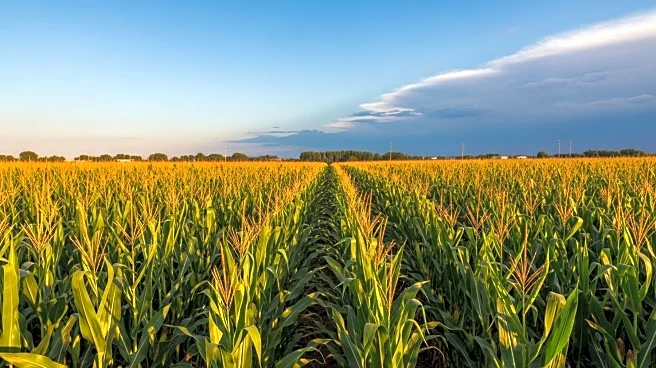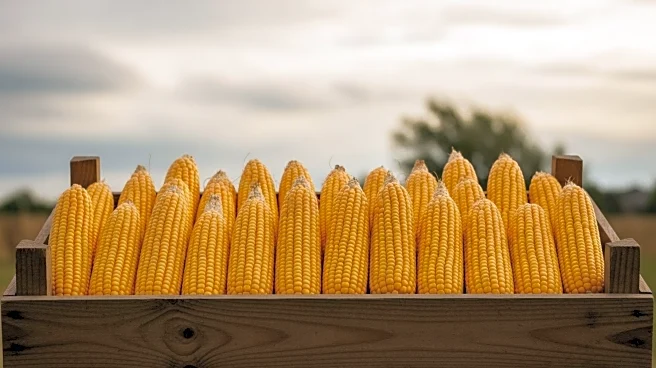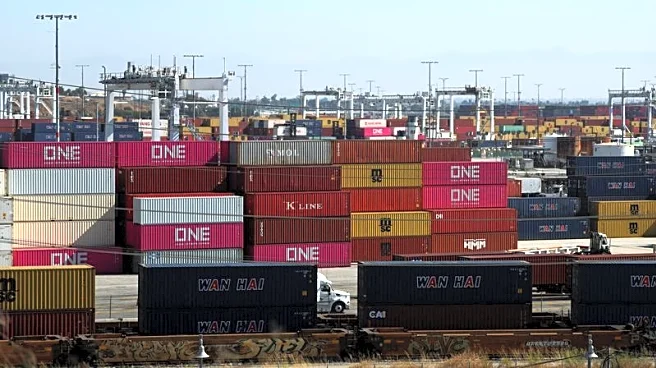What's Happening?
The U.S. Department of Agriculture (USDA) has forecasted a record corn production of 16.7 billion bushels for 2025, driven by an average yield of 188.8 bushels per acre. This projection marks a significant increase from previous years, with expanded planted and harvested acreage reaching 88.7 million acres for grain. Despite the optimistic production outlook, the market faces challenges from erratic weather patterns, crop diseases, and geopolitical tensions. Weather extremes, such as late-season rainfall and high summer temperatures, threaten crop conditions, while diseases like Tar Spot and Southern Rust pose risks to effective output. Additionally, geopolitical tariffs from countries like China, Canada, and Mexico add complexity to market dynamics.
Why It's Important?
The USDA's projection of record corn yields has significant implications for the U.S. agricultural sector and global markets. While increased production typically leads to lower prices, strong export demand from countries like Mexico, Japan, and Colombia could offset oversupply concerns. This demand, coupled with biofuel needs and logistical issues in Brazil, may stabilize prices despite bearish pressures. However, the market remains vulnerable to weather-related disruptions and geopolitical uncertainties, which could impact long-term planning for producers and investors. The interplay between record production and robust global demand will be crucial in determining corn prices and market stability.
What's Next?
Investors and producers are likely to employ strategic hedging to navigate the volatile market conditions. Futures contracts and options on futures offer tools to manage price risks, with structured strategies like collars providing flexibility. The USDA's monthly World Agricultural Supply and Demand Estimates (WASDE) will be closely monitored for yield revisions that could trigger price swings. Additionally, geopolitical developments and weather forecasts will play a critical role in shaping market dynamics. Stakeholders must remain vigilant and adaptable to capitalize on opportunities and mitigate risks in the evolving corn market.
Beyond the Headlines
The record corn production forecast highlights broader issues such as climate change's impact on agriculture and the importance of strategic risk management. As weather patterns become increasingly unpredictable, the agricultural sector must adapt to ensure sustainability and resilience. Furthermore, geopolitical tensions underscore the need for diversified trade strategies and international cooperation to maintain market stability. The integration of advanced data analytics and AI-powered platforms could enhance decision-making and optimize risk management in this complex environment.












